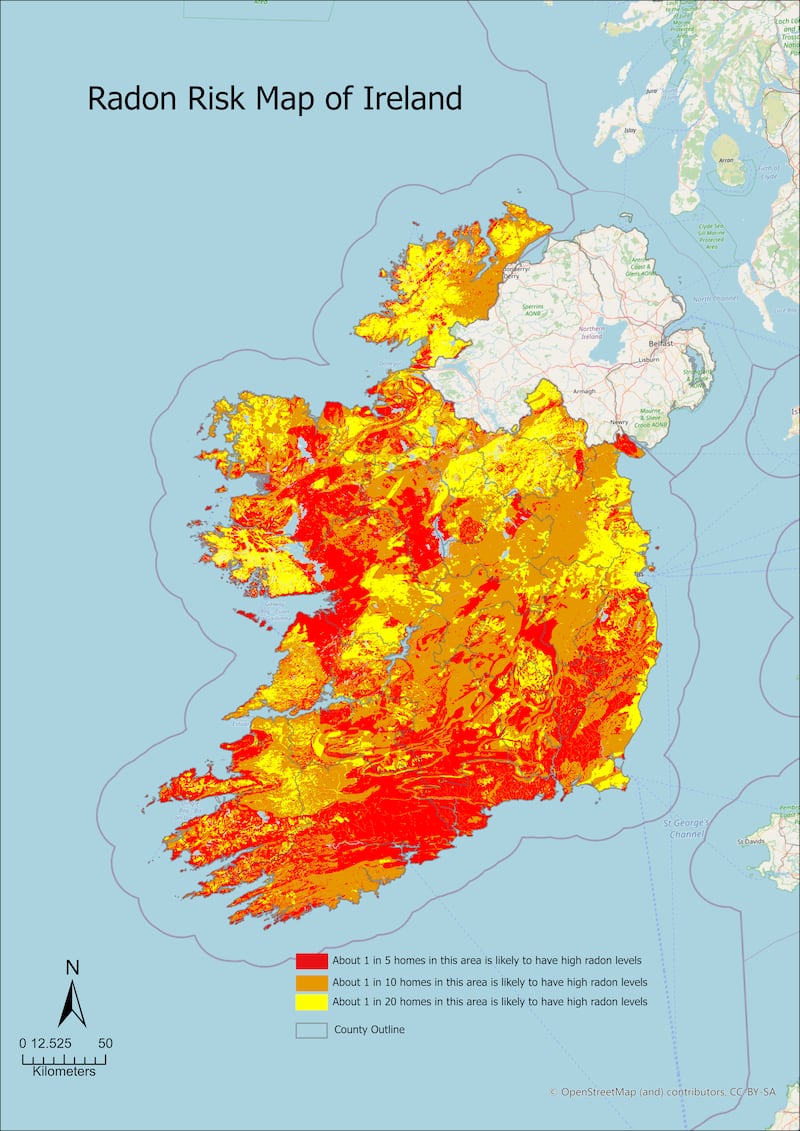More than 170,000 homes are at risk from the cancer-causing gas radon – an increase of 45,000 homes within the last 20 years, according to the latest report from the Environmental Protection Agency (EPA).
The radioactive gas has been linked to lung cancer, with 350 new lung cancer cases linked to exposure to radon in Ireland every year.

The EPA has published a series of maps showing areas of high risk across the country and is urging householders and businesses in these areas to get a cheap and simple radon test.
Areas linked to high radon levels include parts of the Wicklow uplands, areas around Letterkenny in Co Donegal, as well as parts of Galway, Waterford, Mayo, Clare, Cork and Kerry. Radon is naturally occurring and is caused by the natural radioactive decay of elements like uranium and radium.
Verona Murphy’s survival as Ceann Comhairle hinges on two questions
Couple ‘couldn’t be happier’ after ditching Dublin for Berlin to buy a home
How do you know if you are comparatively wealthy?
Shona McCarthy, the Irish woman running the world’s biggest arts festival, is heading home: ‘I’m tired. You feel it to your bones’
David Fenton, EPA senior scientist, said there was “no doubt” that the new data showed an increase in radon levels. Officials had “expected” to see some increase due to the new maps drawing on more readings than before and better geological data.
The previous national map gauging radon levels was produced in 2002 and based on about 11,000 readings, while the latest assessment is drawn from 64,000 readings in homes and workplaces, he said.
Radon levels in an area mainly depended on geological factors, such as the presence of certain minerals in the ground of the region. “Radon risk is more where the house is built rather than how it is built,” Mr Fenton told The Irish Times.
Homeowners can get radon levels in their home tested at a cost of around €50. In most cases, improving ventilation in a property will address the problem, but for buildings with high levels, a “radon sump” device will need to be installed to vent it from the ground beneath the house, which can cost up to €1,000.
Mr Fenton said installation of the device did not require homeowners to “rip up floorboards” and, although expensive, it was likely “money well spent” due to health risks from living in a home with high levels of radon.
The new maps, available on the EPA’s website, show risk levels can change rapidly over a 10km distance. For example a series of maps covering an area from Tallaght to Dún Laoghaire in Co Dublin, and taking in Bray and Greystones in Co Wicklow, carries the warning “between five and ten per cent of the homes in this 10km grid square are estimated to be above the reference level”. The next 10km block south of this, from Delgany to almost Ashford, records “less than one per cent of homes at risk”.
Some of the primary sources of radon that can lead to high levels of this poison include the soils which contain elements like uranium and radium. This makes it particularly concerning in homes with unfinished basements and insecure foundations. When decay occurs beneath a building, the radioactive gas can seep through cracks.
Radon will also be found in the bedrock layer your home rests upon. Again, the rising radioactive gas can seep into buildings, putting people at risk. Sometimes, even the stone in buildings can be a source of radon.
Natural stones that haven’t been sealed with the appropriate coating can result in radioactive gas in the home. Natural stone is often used throughout the home for fireplaces, mantles, countertops and even flooring. Granite, in particular, is a common source of radon.
Well water is another common source as it is in contact with soils and stones that harbour uranium, resulting in radioactive well water as the water picks up this gas. The radon will then escape the water during physical tasks like washing dishes and doing laundry.












